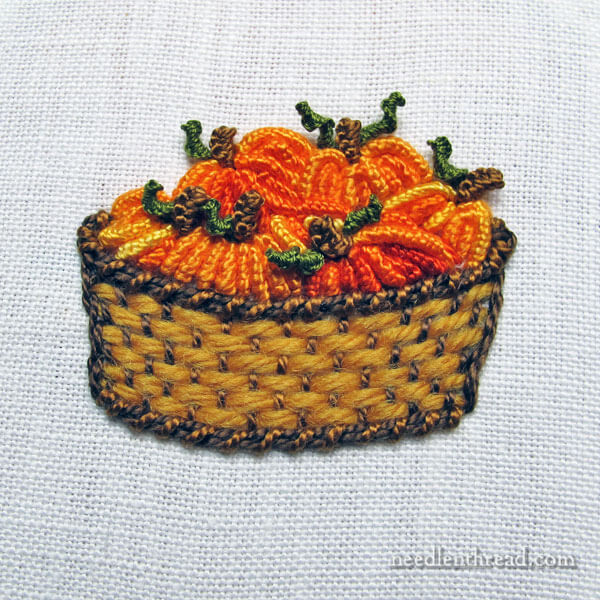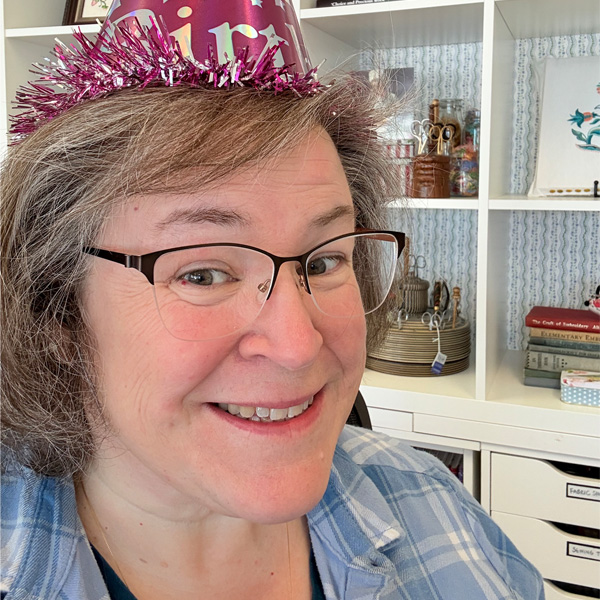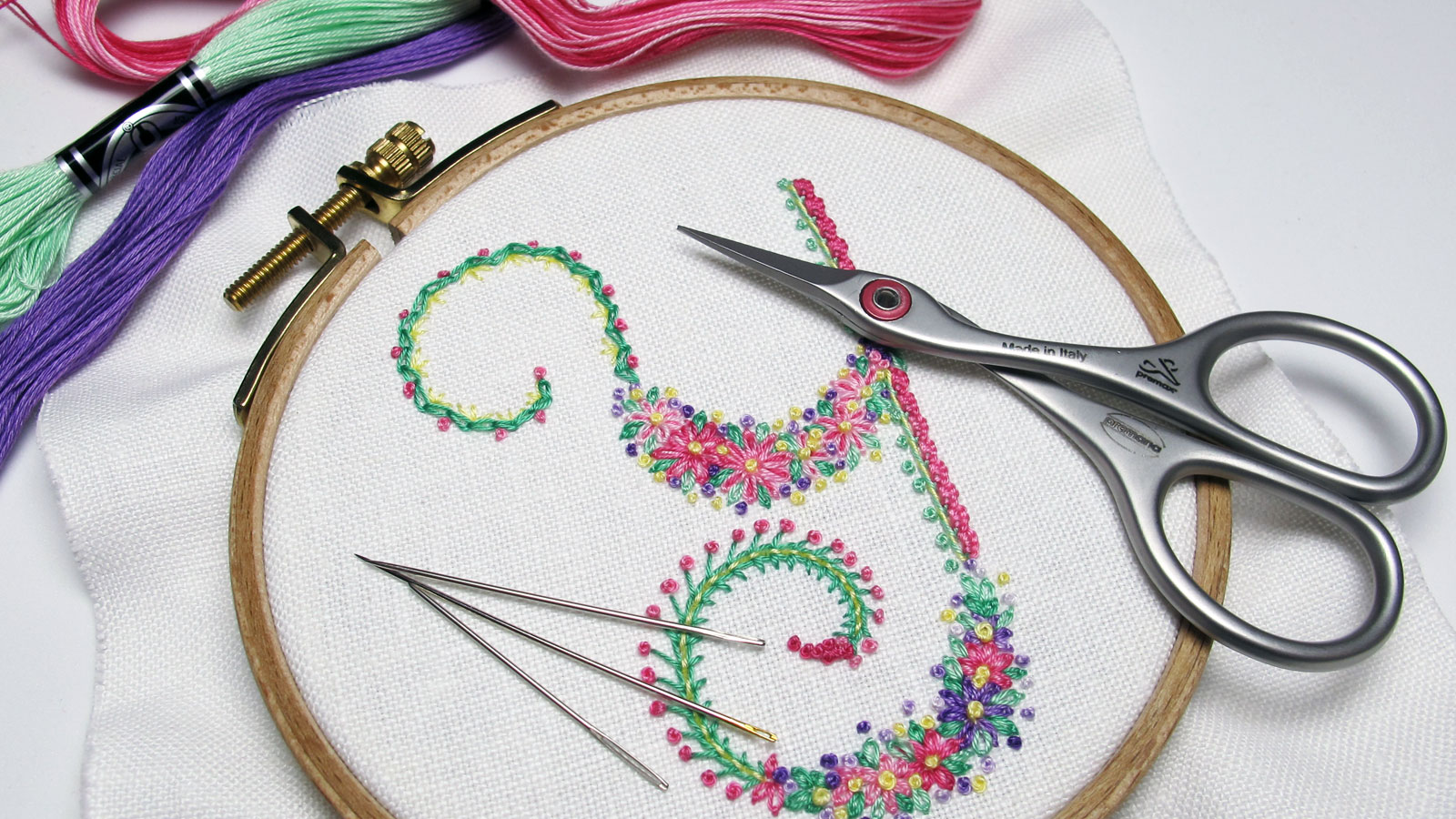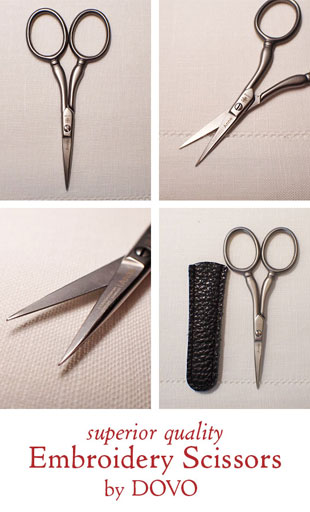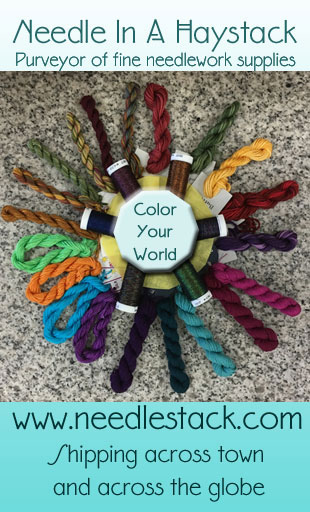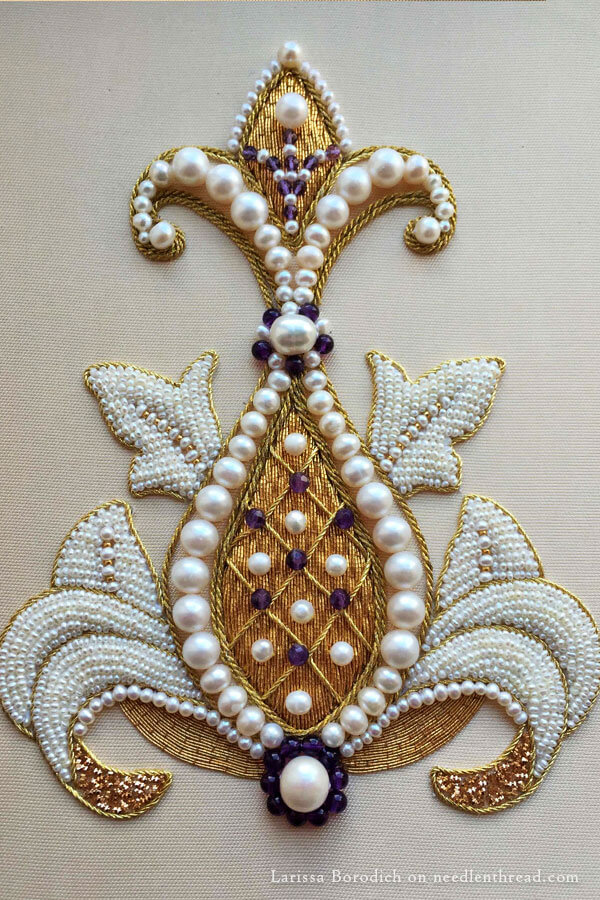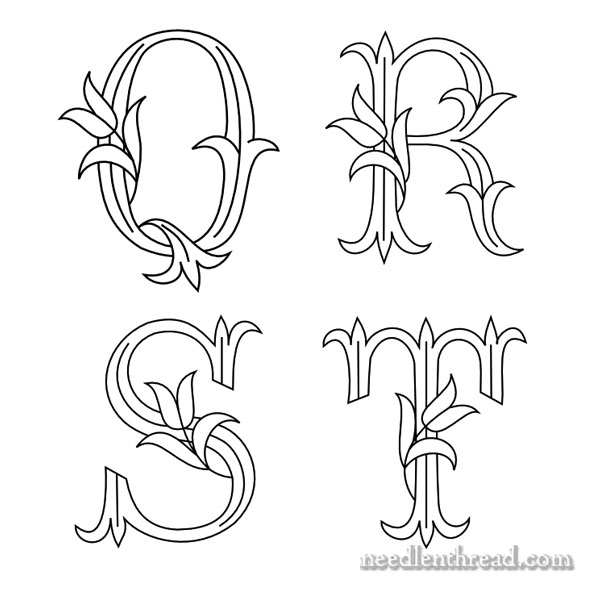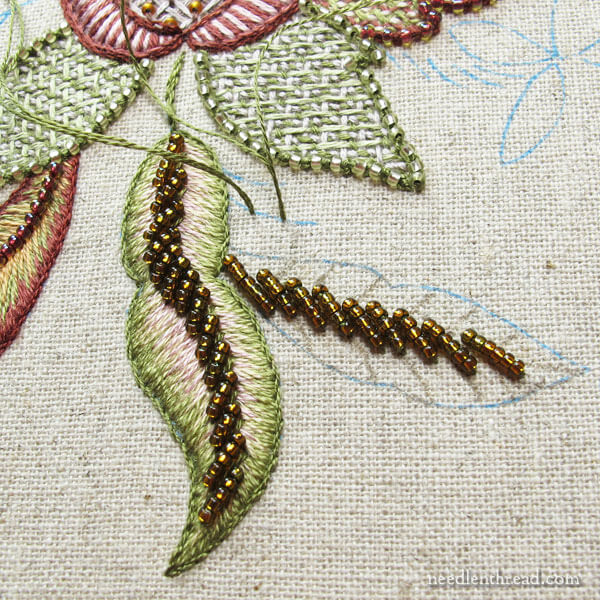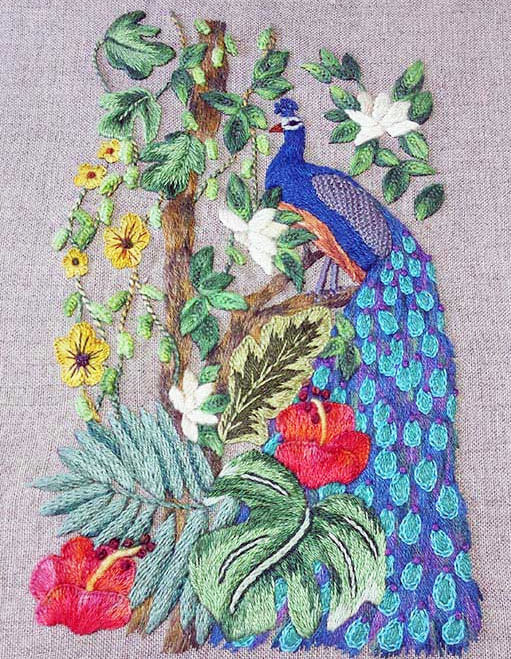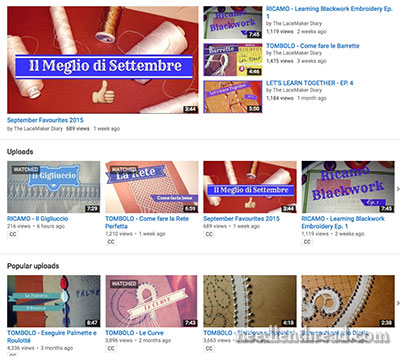Finally.
Finally, I say! I’m So Excited about the slate frames that are being produced for the general US embroidery market by Access Commodities. Finally, a slate frame that is strong, solid, serviceable, and absolutely meticulously correct in all its details. And – finally – I’ve been able to get one!
Yes, I’m a bit of a frame junkie. I have tried them all, you see. And I like many different types of embroidery frames.
But the slate frame – that is, a good slate frame – just can’t be beat.
I’ve also tried lots of different slate frames over the years. Frames made with very heavy, thick wood that, though well-made, were so cumbersome they were hard to handle and manipulate. Frames made from such thin, light wood that they bowed under the pressure of lacing. Frames that were poorly finished, that needed constant touch-up sanding to prevent splinters and snagging.
Frames with roller holes that were too large, so that the frame easily skewed itself with the slightest bump. Frames with twill tape that shredded on the first use.
Frames with conical pegs that popped out whenever the frame was set on a flat surface.
Frames that I’ve made due with when I needed a slate frame, but never felt satisfied with.
All that ends now.
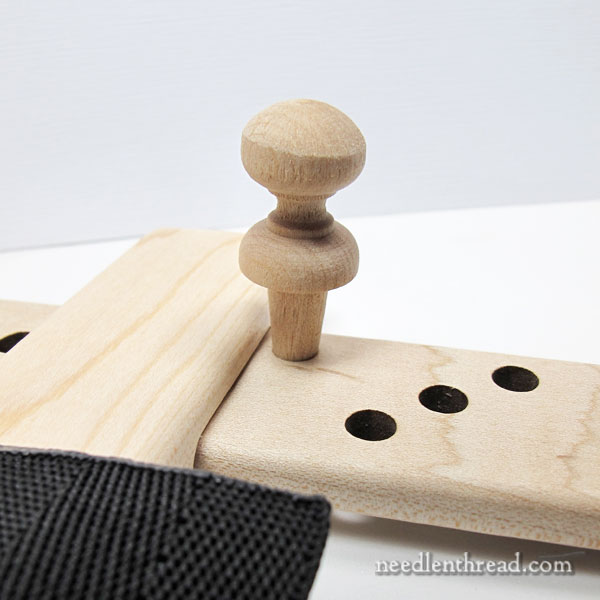 Continue reading “Solid, Serviceable, Superb in Every Detail”
Continue reading “Solid, Serviceable, Superb in Every Detail”
